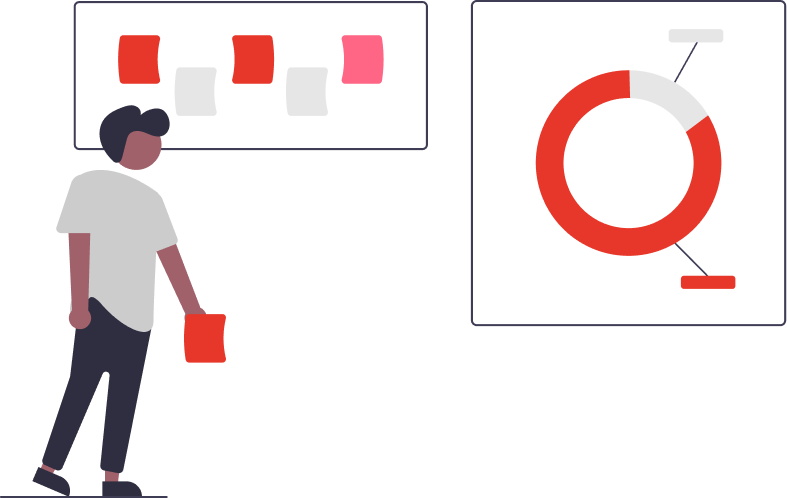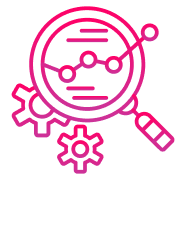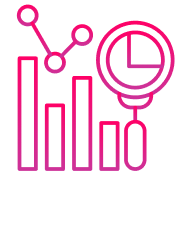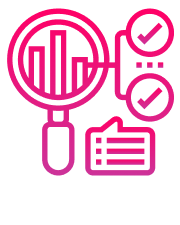Data Analytics and Why it is the Need of the Hour
Data - What and Why?
“Data analytics is the future and the future is NOW! Every mouse click, keyboard button press, swipe, or tap is used to shape business decisions. Everything is about data these days. Data is information and information is power.”
– Radi, Berlin-based Data Analyst.
Come to think about it, the amount of data we receive and send is massive daily at work, in supermarkets, in malls, or even at home. Data is derived from various sources across the digital space like your banking transactions, smartphone applications, fitness and activity trackers, preferences, interests, emotions, desires, values, and benefits obtained from social media and inputs from surveys.
Precisely, data is a solid set of information that is collected to support the strategies and decision-making of an individual, a brand, or an organization. An effective data system could help organizations improve the quality of people’s lives and make informed decisions through evidence drawn from analyzing strong data rather than reaching conclusions through false assumptions and random observations. It also helps with monitoring important systems in organizations and measures the effectiveness of various strategies implemented in the organization over a period of time.

Improved Decision Making

Better Customer Service

Efficient Operations

Effective Marketing
What is Data Analytics?

Analyzing raw data from various sources is important to reach inferences to design a strategy or get a sharper image of how a brand or organization is currently performing. Data analytics dissects data to find various market trends and answer questions to maximize the ability and proficiency of various business sectors. Data analytics can be put to use to assess risks, predict market trends, and critical information like crime prevention and health informatics.
To extract insights from data there have to be various processes, tools, and techniques involved to collect, organize and store data. An equal share of statistical analysis and technology is required to analyze data for trend tracking or problem-solving which results in better business processes and decisions.
Data analytics helps organizations become innovative with their strategies and decision making thus transforming businesses by building personalized customer experiences, optimizing operations, and increasing employee productivity.
“Data analytics is the future and the future is NOW! Every mouse click, keyboard button press, swipe, or tap is used to shape business decisions. Everything is about data these days. Data is information and information is power.”
Types of Data Analytics
Data analytics can help organizations in various ways like predicting and handling disruptions effectively, efficient customer service, real-time inventory management, cost optimization, and preventing fraudulence. Though it is a vast stream, data analytics has been categorized into four.

Descriptive Analytics
It interprets historical data and compares it with the current ones defining what has happened over a particular period of time to understand the transformations it has created in a business or any given scenario.

Diagnostic Analytics
As the name says, it diagnoses why something happened after analyzing a particular set of data and understanding the reasons behind the occurrences. This could help guide your business on a better track compared to the past.

Predictive Analytics
This gives you a heads-up on what could happen in the future by predicting trends and attitudes. It can predict the result of an action and thus structure actionable insights for businesses so that they don’t make any blunt moves or fail with their plans or campaigns.

Prescriptive Analytics
It identifies certain data insights and prescribes what is to be done next which helps businesses with effective decision-making.
Popular Data Analytics Methods and Techniques
Regression Analysis - Though it cannot infer the cause or effect of any particular action, it can help you find a correlation between a set of variables which could help you make predictions.
Factor Analysis - It is a technique used to uncover latent independent variables. More precisely, evaluating customer interests based on various factors such as color, design, quality, and durability of a product.
Cohort Analysis - This analysis helps identify common characteristics among a group of customers or users. This can help businesses analyze a trend or pattern in a given period of time.
Cluster Analysis - It is the grouping or clustering of a set of data elements found similar within different datasets.
Monte Carlo Simulation - This analysis is used to predict the probability of different outcomes when the intervention of random variables is present. This model helps understand uncertainties present in prediction and forecasting models.
Time Series Analysis - As the name says, it helps analyze a particular set of data collected at consistent intervals of time. This could be helpful for organizations to keep a track of various trends and patterns that occur and repeat over specific time frames.
Sentiment Analysis - It is interpreting and classifying emotions that could be positive, negative, or neutral from various textual data.
How is Data Transforming Businesses Today?

Organizations are using data analytics to inspect, cleanse, model and transform their data allowing them to improve their business strategies. To deal with the fast-paced market where it is almost impossible to predict what might happen next, data analytics helps access data across teams and enterprises to help derive insights into the market and competitors analyzing the past, present, and future of your business. A sneak peek into key components of data analytics that are transforming businesses widely across all industries.
Data Visualization - Illustrating data using basic graphics such as charts, infographics, and animations through which complex data relationships and data-driven insights are easily made to understand. Organizations use this method to depict company structure and hierarchy whereas data techies use it to discover and explain trends and patterns.
Smarter Business Decisions - Data-driven business decisions through structured data analysis help organizations reach conclusions on the planning and expansion of businesses and their products and services.
Detecting Fraud - With the help of data analytics, as much as the banking sector benefitted, the finance and administrative divisions of every organization can resourcefully allocate funds, track payments, and detect fraudulence which is a larger threat to every business. Examining, observing, and detecting potential risks could help businesses prevent operational risks.
Product and Services Improvement - With a wide array of products and services that companies these days offer, analytical solutions can inspect products based on seasons, region, and popularity to help companies bring out the right product at the right time which would boost sales.
Analytics technology is a sea that goes deeper as we dig in. It could help businesses transform their customer relationship, evaluate market and business campaigns, and build effective and innovative branding strategies.
How to Build a Great Data Analytics Model?

With technology pacing faster each day, data analytics is set to accelerate in top gear a few years down the lane. And hence, it is vital to devise a data analytics strategy and structure for your business.
First and foremost, understand the requirements of your business and why it needs to have a real-time analytics stack. Following a strategy that worked for somebody else wouldn’t be wise because problems, solutions, and results vary from company to company. Have an understanding of how the team or company is going to use analytics to build a larger business goal.
Secondly, identify your data sources as to where would you derive data from and how it would benefit your company in the decision-making process. This could include customer relationship management (CRM) data, enterprise resource management (ERP) data, customer support system data, etc.
The next giant step is to build a data infrastructure where you will have to frame a data pipeline to collect and store data in a cloud data warehouse to be analyzed at a later stage.
Once these basics are set, the next important step is to choose a real-time analytics tool that you would want to invest in. Just because an X or Y you know decided on an ABC tool, you need not necessarily choose the same because choosing the wrong tool would leave you in a doldrum. Choose a tool that is easy to use, and helps teams to collaborate and share insights. Security, compliance, and data governance should be given priority when finalizing a tool.
Businesses big or small need supporting tools and techniques for their growth and success. Data analytics which is the technology of tomorrow is going to drive businesses to newer directions with its innovation par excellence and deeper business insights.
